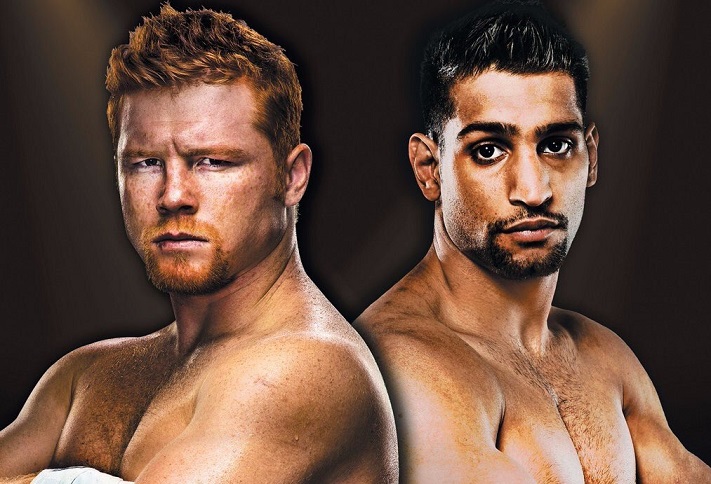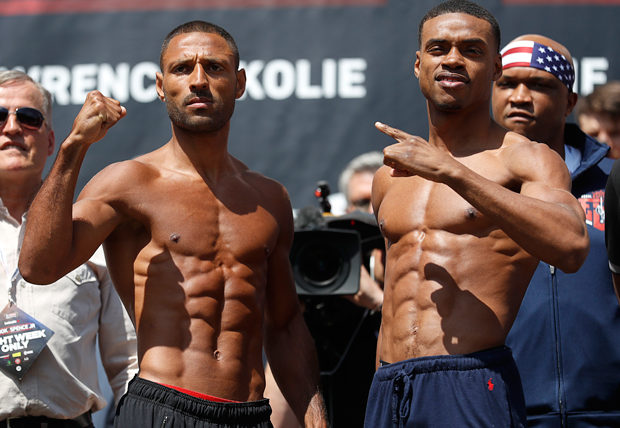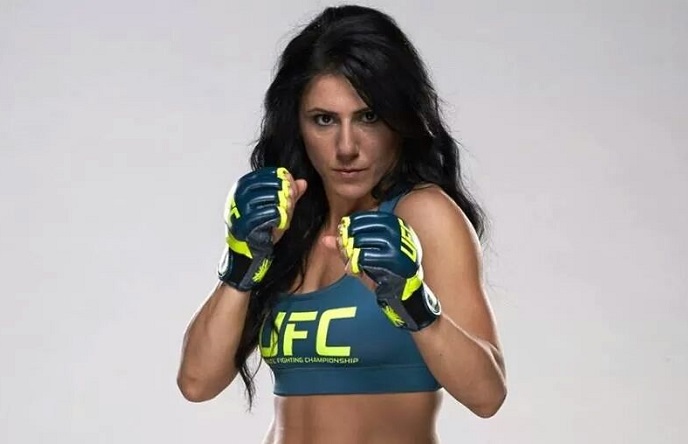Canelo vs Khan: Not A Superfight
When Amir Khan’s bout with Saul “Canelo” Alvarez was announced, the reaction among the world’s fight media was, almost universally, one of welcome surprise. Few had anticipated a match-up between the newly crowned WBC middleweight belt-holder and Britain’s former 140 lb world champion. The shock of the announcement was coupled with a healthy dose of enthusiasm for what promises to be an entertaining clash between two of the sport’s most recognizable names. But while I share the sense of excitement for what is a most intriguing piece of matchmaking on the part of Oscar De La Hoya’s Golden Boy Promotions, amidst the fanfare I would also caution against exaggerating what the fight means in the wider context. Canelo vs Khan may well be a fascinating meeting between two renowned world-class boxers, but it nevertheless falls short of the vaunted “Superfight” status.
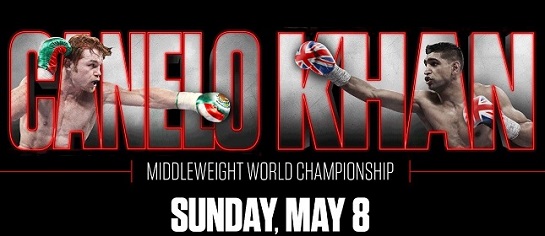
Defining a precise set of criteria for a true superfight is not easy, but it’s safe to say that both boxers must be considered elite and popular operators and they should be competing at, or very close to, their peak years. In the context of the sport’s history, there should also be a meaningful prize at stake, and the outcome of the match should carry significance to the story of the fighters’ respective era. While Canelo vs Khan certainly meets some of these points, it also lacks some crucial ingredients.
Considering that the WBC and lineal middleweight championships are on the line, the victor will emerge, at least on paper, with a substantial piece of silverware. Looking at their respective ages (Canelo is 25, while Khan turned 29 in December), as well as their recent form in the ring (Canelo has won his last four, while Khan’s win streak stretches to six), there also seems little doubt that both men are currently at or very close to their fighting primes. With Canelo entering as a two-weight world champion and with names like Shane Mosley, Austin Trout, Floyd Mayweather, Erislandy Lara and recent victim Miguel Cotto among those on his ledger, the Mexican certainly cannot be accused of lacking elite pedigree.
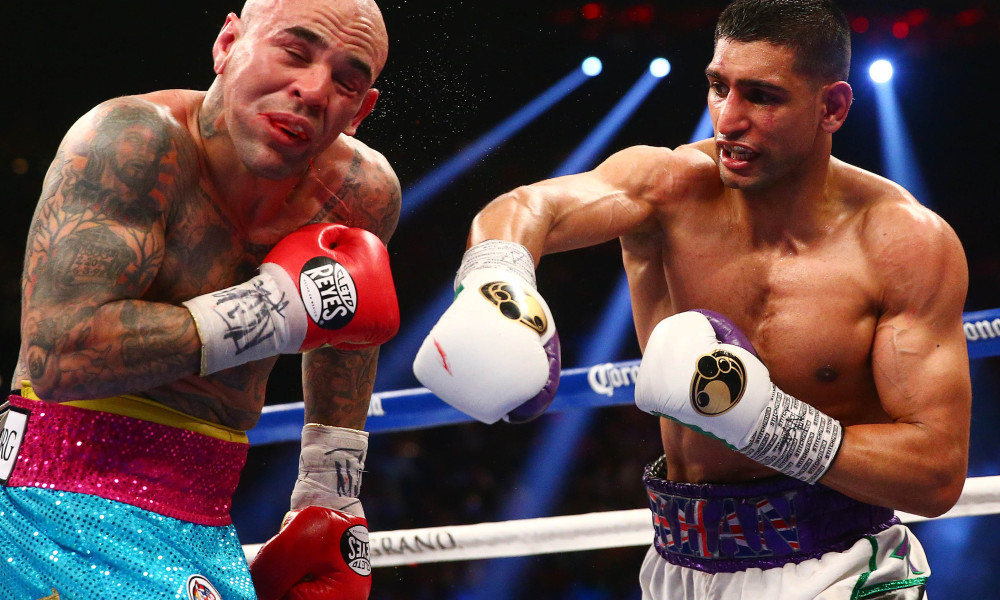
Khan’s record is also impressive: entering as a former light-welterweight champion and Olympic silver medalist, the Bolton boxer has mixed with world-class names such as Marco Antonio Barrera, Paulie Malignaggi, Marcos Maidana, Zab Judah, Lamont Peterson and Danny Garcia, with recent victories at 147 over welterweight contenders Luis Collazo, Devon Alexander and Chris Algieri. Together Canelo and Khan enter the match with an impressive combined total of 14 successful world title fights between them. On the face of it then, there are a number of positives to be found when analyzing the bout’s “superfight” credentials. Scratching further below the surface though, it becomes apparent that all is not quite as impressive as the these stats might suggest.
Firstly, the agreed catchweight limit of 155 lbs – barely over the light-middleweight limit of 154 and a full 5lbs below the traditional middleweight limit of 160 – removes much of the lustre from what is ostensibly a fight for the true “middleweight” championship of the world. The reality, of course, is that this is a contest between a welterweight and a light-middleweight masquerading as a middleweight championship contest. The fact that legitimate middleweight king Gennady Golovkin has been waiting in the wings for a shot at the lineal championship for years only compounds the impression that “Khanelo” is something of an insult to its heritage.
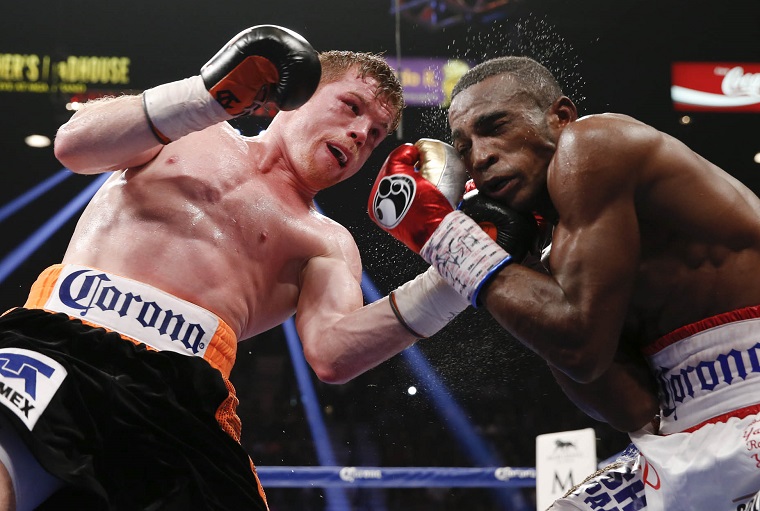
Secondly, and perhaps more importantly in the current context, while Khan’s record is certainly nothing to be scoffed at, the harsh reality is that his name-value far outstrips his actual accomplishments in the ring, and he simply doesn’t qualify as a truly elite boxer. That is not meant as a personal criticism of the British pugilist: he ought to be given immense credit for his ambition in taking the fight, as well as for his past achievements in the ring. It is, nevertheless, an honest assessment of the heights he has reached so far in the sport.
The disproportionate relationship between Khan’s name-value and accomplishments stem largely from his success as a 17-year-old Olympian, which made him a national hero in the UK and provided world-wide publicity the like of which most professional boxers can only dream of. The Olympic silver medal spring-boarded him towards a deal with British broadcaster ITV, granting him the kind of exposure, early-career management and promotional backing afforded to very few boxers. With millions of viewers watching his progress, Khan was able to gain a wide following before his dues had been properly paid in the sport, and the accompanying leverage this provided when negotiating his way through the rankings has been a part of his make-up ever since.
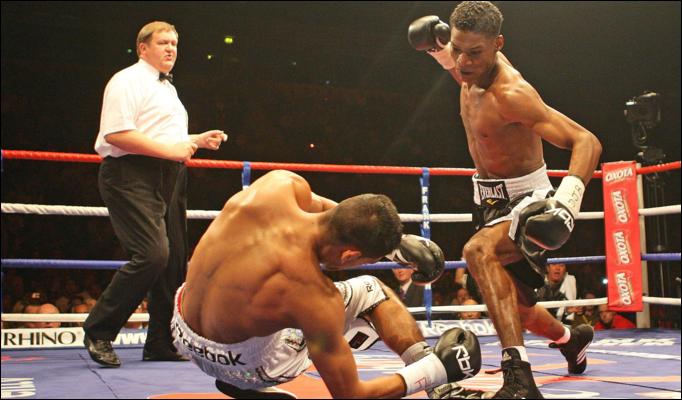
It was no coincidence, for example, that as he climbed the domestic ladder Khan’s handlers steered him away from a British title fight with Jon Thaxton, a dangerous and deserving opponent. A fight with the Norwich man would have been a natural contest when Khan was Commonwealth champion and Thaxton held the British title back in 2007 and Thaxton called out the Olympic star relentlessly in the media, to no avail. Khan never fought for the British title, although you can be sure his promoters would have jumped at the chance to snatch the belt had Khan not looked quite so vulnerable in his Commonwealth title defence against Willie Limond, or had a less formidable obstacle than Thaxton stood in the way.
Then came the disastrous first-round defeat to unheralded opponent Breidis Prescott. It was the first of Khan’s three career defeats to date, two of which ended with the Briton being badly hurt or knocked out. Although there is certainly no shame in losing, it is the nature of those losses which are a cause for concern. The fact his team never attempted to avenge a single one of his defeats, despite carrying the promotional and financial clout to make those matches happen at any time, also suggests a fundamental lack of confidence.
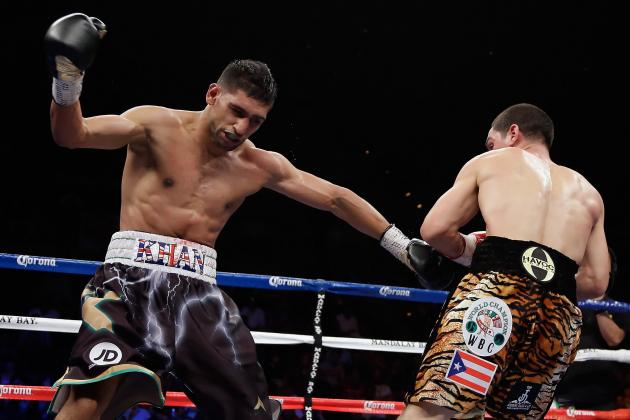
Aside from the knockout defeats, a lack of punch resistance has been evident throughout the Englishman’s career, with Khan visiting the canvas a total of nine times in his 34 fights, a very worrying number for a boxer who is stepping up to a significantly higher weight than he has ever competed at. To be fair to Khan, he has also proven that the “glass jaw” label some critics have dubbed him with is exaggerated, with Marcos Maidana landing some hellacious shots yet failing to put the Englishman away in their 2010 light-welterweight bout. That said, if former lightweight Julio Diaz carried enough power to put Khan on the floor in his welterweight debut, there is no question that a dangerous puncher like Saul Alvarez can do the same.
To his credit, the Bolton man has re-grouped and bounced back like a true champion from his defeats, but he has been unable to replicate his earlier world title successes, all of which came at super-lightweight, a full 15 lbs below the agreed upon weight limit for Saturday. And while he has scored commendable victories over genuine world-class welterweights Collazo and Alexander, they were not world champions. Meanwhile “King Khan” has repeatedly turned down the chance to face British rival Kell Brook, insisting that the champion has been facing “bums” and needed to “fight some proper opponents” before he would consider meeting him.
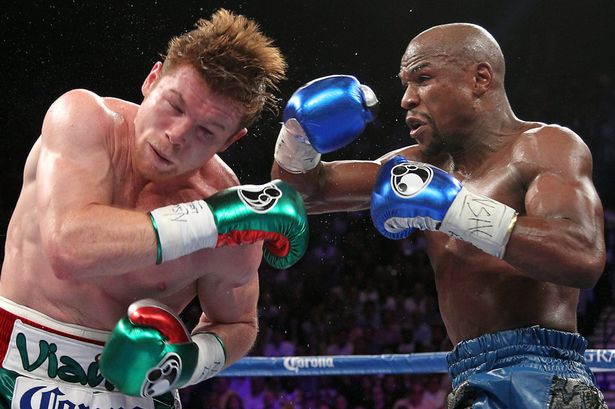
Perhaps there was a good reason for this, as Amir held out for mega-money bouts against the sport’s two biggest stars, Floyd Mayweather and Manny Pacquiao. In fact, many might view his duel with Canelo as vindication for refusing a Brook fight. But even so, there is a lingering feeling of unfinished business for Khan regarding his domestic rival, not to mention a missed opportunity to potentially prove his worth against a legitimate belt-holder in the welterweight division.
All in all then, if we strip away the fame and the popularity of brand Khan, what we are left with is a talented fighter who has established himself as a world-class welterweight, but who has not yet proven his credentials in the higher weight division, has not won a title fight in almost five years, and has been knocked down or out numerous times. He therefore falls well short of being regarded as one of the truly elite fighters in the sport, and is rightly considered a significant underdog against Alvarez.
No doubt Khan would argue that is precisely the reason he is taking such a risky fight, and that a victory will prove beyond doubt that he belongs in the pantheon of modern greats. There is a respectable school of thought making the case for why he can do just that, the argument being that Khan can out-speed the bigger champion and out-point him using a carefully implemented and disciplined boxing strategy, utilizing his quicker footwork and avoiding the Mexican’s heavier hands.
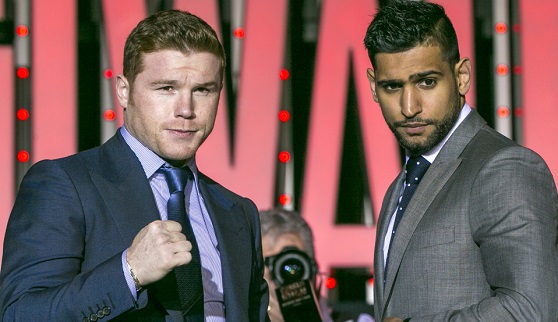
While I can see the logic behind this thinking, it depends too heavily on an exaggerated description of Khan’s speed advantage and does not pay adequate respect to the young champion’s ring IQ. Miguel Cotto and Erislandy Lara did not succeed against Canelo by employing a similar “boxing” strategy, and they were bigger, stronger, more defensively adept fighters than Khan. They also had greater punch resistance, and though I do not buy the idea that Khan has a glass jaw, it’s nevertheless vulnerable enough to suggest that, sooner or later, the more powerful fiery-haired Mexican will cause the necessary damage to turn the bout irrevocably in his favour.
Ultimately, what we have in “Khanelo” is a meeting between two popular boxers with crossover appeal that promises to deliver a boost to the sport’s exposure among casual followers, and an interesting tactical battle that will intrigue hardcore boxing fans. What we do not have is a genuine 50/50 contest between two fighters who can both be considered members of the sport’s current elite. It is, in other words, a very good fight. It’s just not a “superfight.” — Matt O’Brien

